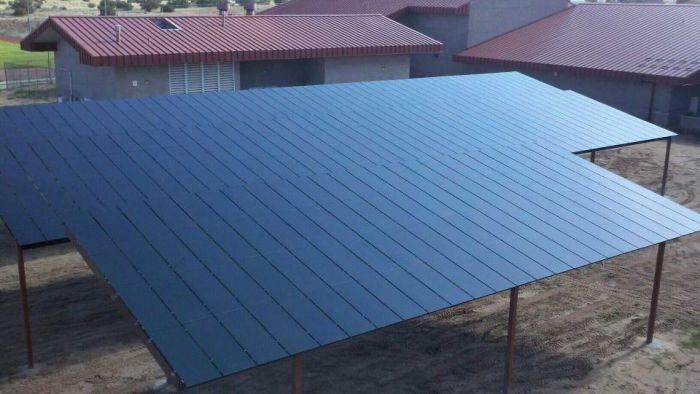Stion gets Xmas gift, $25 million to boost production
 Just in time for the holidays, Stion Corp. has announced its latest, $25 million round of financing to allow the start-up photovoltaic maker to move forward with its plans to start commercial manufacturing of its next generation photovoltaics. The company is working to bring it’s unique, tandem copper indium gallium diselenide (CIGS) module thin-film photovoltaic technology to the market.
Just in time for the holidays, Stion Corp. has announced its latest, $25 million round of financing to allow the start-up photovoltaic maker to move forward with its plans to start commercial manufacturing of its next generation photovoltaics. The company is working to bring it’s unique, tandem copper indium gallium diselenide (CIGS) module thin-film photovoltaic technology to the market.
Stion is already producing some of the most efficient thin-film photovoltaics available. With its single-junction architecture, it produced commercial modules up to 15.6 percent efficient. The tandem architecture could produce devices that are much more efficient, up to 18.8 percent while still using thin-films as opposed to silicon-based photovoltaics. If Stion reaches that level of efficiency its technology would be on par with silicon PV, but likely less expensive to produce.
However, to get there, the company still has to get enough funds to ramp up its commercial production, a process the company is currently in. The company raised $6 short of $25 million out of a proposed $55 million round of funding. However the round of funding is not yet fully closed. “The funding was led by Khosla Ventures and other existing investors participated as well,” said a spokesperson for Stion. The disclosures were made as part of a Securities and Exchanged Commission filing.
The company said that is possible that all former investors would participate in the current round of funding. In the past, other investors have included Taiwan Semiconductor Manufacturing Co., LightSpeed Venture Partners, Braemar Energy Ventures and General Catalyst Partners, according to Bloomberg. “We will provide additional details on the round and use of proceeds when it is fully closed.”
Still, the round of funding is the latest vote of confidence in the company as it works to reach commercial productions. Just last month it won a $2 million grant from the Department of Energy’s SunShot Initiative.
The investments may just be a drop in the bucket. To expand its global production to 140 megawatts annually, it could cost up to $500 million. The company also is working on making sure its PV modules are made close to where they are being used. It has plans to build manufacturing in the U.S., Asia and Europe, centers where the company anticipates the most demand from.



